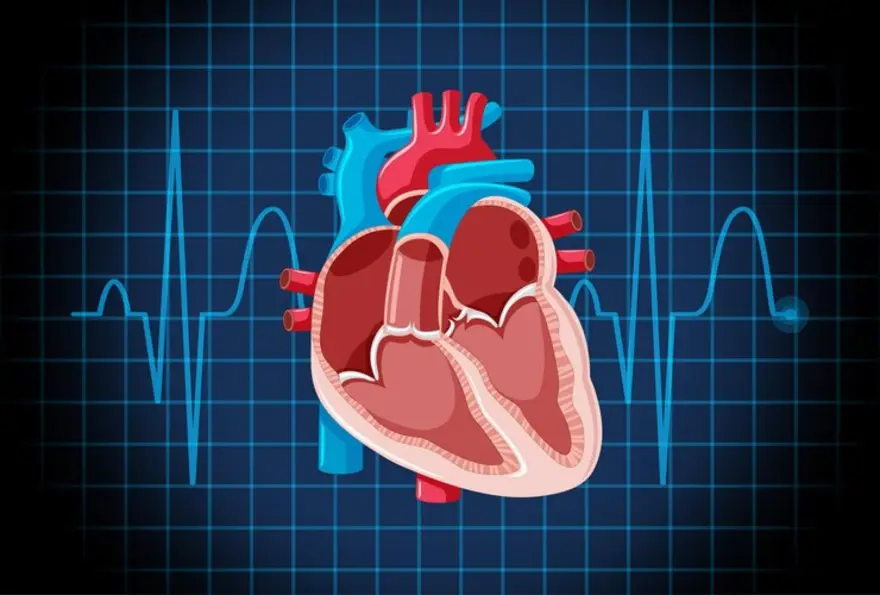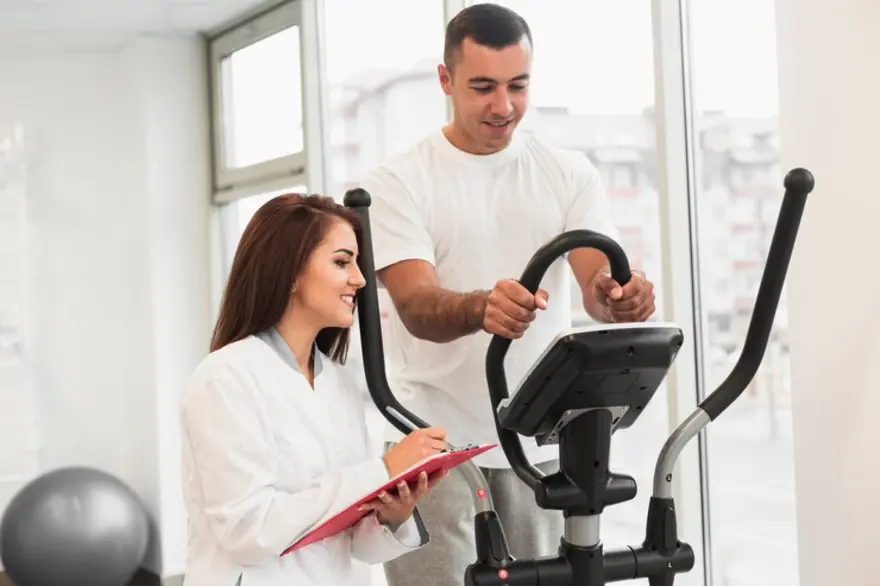full body health checkup
Telltale Signs of Anemia. Could You Be Anemic Too?
Anemia is a medical condition that barely needs an introduction. This lack of enough red blood cells or hemoglobin is so common that each one of you must have heard about the term in your vicinity.As per studies, about one-third or nearly 30% of the world's population is affected with anemia due to varied causes. The fearful stats are that the prevalence of anemia is even high than this (approximately 51%) as compared to the global prevalence. How much is enough? In general, the normal levels of hemoglobin in men and women is: Men: 13.8 to 17.2 grams per deciliter (g/dL) Women: 12.1 to 15.1 g/dL or 121 to 151 g/L Anything below these Hb levels is considered to be anemia. It is caused primarily through three basic pathways: A decline in the production of red blood cells or hemoglobin A rise in loss or destruction of red blood cells. Increased demand for iron in the body (for instance, during pregnancy or illness). Looking at a complete blood count (CBC) test report, your doctor can get clues as to what could be the cause of anemia in your case. Book test now. Symptoms of Anemia Anemia can be of many different types. Your symptoms may vary according to the type of anemia, the underlying cause, the severity, etc. While the various types of anemia may have certain specific symptoms, some common problems may be noticed first. Symptoms common to many types of Anemia include the following: Feeling tired all the time and loss of energy Shortness of breath and headache, especially with exercise Difficulty concentrating and focus Dizziness Pale skin Crams in legs Sleeplessness Remember, your body also has a phenomenal capacity to compensate for early anemia. You may have mild anemia or one that developed over a long period of time, and not notice anysymptoms. Specific symptoms of anemia Anemia Caused by Iron Deficiency (Iron deficiency anemia) A hunger for strange substances such as paper, ice, or dirt Upward curvature of the nails, called koilonychia Soreness of the mouth with cracks at the corners (angular cheilitis) Anemia Caused by Vitamin B12 Deficiency A tingling, or pin and needle sensation in the hands or feet Loss in the sense of touch Difficulty walking (or wobbly gait) Stiffness of the arms and legs Memory loss Anemia Caused by Chronic destruction or loss of Red Blood Cells Jaundice (yellow skin and eyes) Brown or red urine Leg ulcers Symptoms of gallstones Sickel cell Anemia This is a condition that leads to red blood cells become rigid and sickle-like shaped. When red blood cells sickle, they break down prematurely. This can cause anemia. Fatigue Higher chances of infection Delayed growth and development in children Episodes of severe pain, especially in the joints, abdomen, and limbs Anemia Caused by Sudden Red Blood Cell Destruction Pain in abdomen Jaundice Small bruises under the skin Seizures Symptoms of kidney failure How is Anemia diagnosed? Your doctor is likely to ask you about your medical and family history, and order the following tests: Complete blood count (CBC): This test is used to count the number of red blood cells in your blood. Your doctor will check the hematocrit and the hemoglobin in your blood. In general, adult hematocrit values vary between 40% and 50% for men and 35% and 43% for women. For people who engage in intense physical activity, are pregnant or elderly, the numbers may normally be lower. Smoking and being at high altitudes might elevate numbers. Additional diagnostic tests A few tests may be ordered to evaluate different parameters like the levels of serum ferritin, iron, total iron-binding capacity, and/or transferrin may be ordered in for diagnosing an iron deficiency anemia. Additional tests for anemia include: Mean cellular volume (MCV, included in CBC) Serum ferritin levels Iron studies test (low iron saturation) Transferrin or total iron-binding capacity (TIBC) Could you be at risk of getting Anemia? While there are multiple types of anemia, iron deficiency anemia is the most common form, especially among women and people who have a diet that lacks enough iron.The following groups of people have the highest chances for iron-deficiency anemia: Menstruating women, especially if menstrual periods are heavy Pregnant or lactating women People with gut-related conditions such as celiac disease, inflammatory bowel diseases such as ulcerative colitis, or Crohn’s disease People with gastric ulcers or peptic ulcer disease People who have undergone bariatric procedures, especially gastric bypass operations Vegetarians, vegans, and other people whose diets do not include iron-rich foods People who have undergone major surgery or physical trauma As per some literature, children who drink more than 16 to 24 ounces a day of cow's milk can also develop iron deficiency. Cow's milk contains little iron, and may also decrease iron absorption and cause irritation to the intestinal lining. However, always consult your child’s doctor as to what might suit him and what should be avoided. Make sure to eat an iron-rich and healthy diet including green leafy vegetables and fruits. Also, if you are experiencing chronic fatigue, do get a comprehensive test done and speak to a doctor.
Back pain: Causes, Symptoms, Diagnosis, Prevention
Do you often find yourself taking leave from work over your back pain? Well, it is one of the most common reasons people consult a doctor and miss work. Back pain can tamper with one’s daily routine and can be highly uncomfortable. Muscles, ligaments, tendons, and bones together constitute the human back, they work in tandem to support the body and help us move around. Problems with either of these can affect your back adversely. According to WHO, approximately 80% of the population suffers from back pain at least once during their lifetime. Back pain is one of the common problems seen in people across all age groups. Back pain in women But unlike men, there are a lot of changes that happen in a woman with age right from hormonal changes to menstruation and pregnancy that take a toll on the back. Whether you’re a working woman or a housewife, it goes without saying that every woman has a massive workload and long working hours both at the office and home which affects her overall health. However, the back and the spinal cord which are the pillars of the body are the ones that are most affected. Take extra care of your health with Metropolis TruHealth Smart Women Health Package. What are the possible causes of back pain ? The most common cause of back pain is muscle strain and incorrect posture. Other causes include: Long working hours while sitting in chairs and lack of exercise Obesity · Poor posture: Often we don’t realize, but while sitting or working on computer screens, we tend to adopt a hunched back position, this results in back as well as shoulder pain later on. Muscle spasm, fractures, damaged disks (cushions between our bones in the spine) Bulging or ruptured discs: Rupturing of a disc can cause extra pressure on a nerve, and press the nerve causing your back pain. Similarly, bulging discs can also put pressure on your nerves and lead to debilitating backaches. Osteoporosis: When your bones become brittle, your spine’s vertebrae can develop small painful fractures. Arthritis: Another major cause of back pain is spinal osteoarthritis, which is due to damage in the cartilage of joints in the lower back. Eventually, the space around the spinal cord starts to get narrower, leading to what is known as spinal stenosis. This could be another type of arthritis too. Book a test here and know if it can be rheumatoid arthritis. Watch out for these symptoms ! A shooting pain anywhere on the back or a burning or stabbing sensation that sometimes runs down till your leg or the foot. If it is due to muscle strain, or posture, that pain is usually short-lived, maybe a few days or weeks. But if you suffer from back pain for more than 3 months, you should consult a doctor. Mostly the pain goes away with minor treatment, exercise, or self-care, but if the back pain is accompanied by fever, numbness in the legs, constant weakness, weight loss, or difficulty while urinating, you should seek immediate medical assistance. Diagnosis for back pain You have acute pain if the pain lasts for a few weeks, but if the pain is persistent, and lasts for more than 3 months, it is a chronic or long-term pain that needs medical supervision. Your doctor will examine and assess your back and if they suspect something, they might order one of the following tests- X-ray: An X-ray is done to check the alignment of the bones, and help detect signs of broken bones or arthritis. MRI or CT scans: Since X-rays don’t show any damages to the soft tissues, it is important to have an MRI done, to detect problems with blood vessels, muscles, nerves, and ligaments. Blood tests: Though it is a rarity to order for blood tests, it can be helpful when you want to determine whether some infection is the cause of your back pain. Bone scans: These scans are done to check if there is a bone tumor or compression fractures due to osteoporosis, basically performed to detect any sort of abnormalities in your bone tissue. EMG (electromyography): It is a nerve study that measures the electrical impulses produced by nerves and how your muscles react to them. Treatment of back pain While for acute pain, pain relief medicines, and warm water heating can be sufficient, for chronic pain conditions, the doctor suggests medications like- Over-the-counter pain relievers Topical pain relievers such as creams, ointments, sprays, or patches. Muscle relaxants Back pain can be a debilitating and life-changing condition. Hence, if you have a backache that is recurrent in nature or if your back pain fails to show any improvement even after taking sufficient rest, it is wise to consult a spine specialist. Prevention is better than cure Being a little careful and agile can go a long way in curtailing the risk of back pain. Here are a few tips you can follow, in order to ease that back pain. Calcium and vitamin D for better muscle and bone health: Include calcium and vitamin D in your diet. Let your bones, muscles, and joints heal from severe back pain. Check your calcium and vitamin D levels here. Posture: Your posture while sitting as well as while standing can immensely impact your back. While sitting, always try to have your knees and hips leveled and keep your feet flat on the floor, if you use a keyboard, have your elbows at right angles and support your back, at the same time, when sitting for long hours. While standing, your back should always be straight, and you should balance your body weight evenly on both your feet. Regular exercise: Flexibility training can help with back pain, a professional would be better able to guide you through exercises that will help build strength and keep your body weight in control as well. Other precautions include wearing comfortable shoes, using a comfortable mattress, not smoking, and keeping your body weight in check. With daily stretches, a proper diet, and maintaining correct postures, you can avoid and prevent back pain easily. Your back endures a lot of wear & tear over the course of a lifetime- Take care of it!
 Home Visit
Home Visit Upload
Upload
















 WhatsApp
WhatsApp